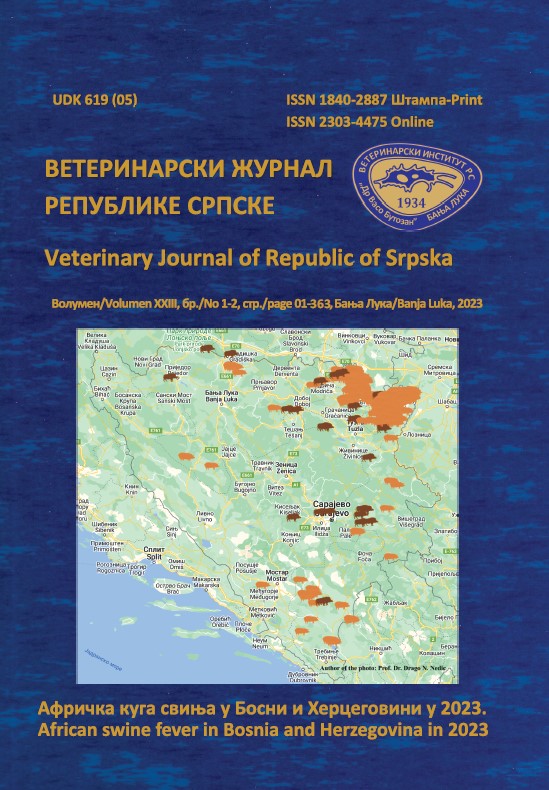VECTOR ZOONOSES THAT MAY THREAT THE REGION OF SOUTHEAST EUROPE
DOI:
https://doi.org/10.7251/VETJEN2301183VAbstract
The first Faculty of Veterinary Medicine was founded in France (Lyon) in 1762, in order to prevent the cyclical waves of rinderpest at the beginning of the 18th century in Europe. Three centuries later, infectious diseases, including zoonoses, cannot be eradicated in the regions where they appear enzootically, and also thair spread is a real threat to distant regions of the world. A special segment of the infectious diseases studies is focused to the group of zoonoses that are transmitted by vectors. There are numerous infectious diseases of animals and humans, whith the causative agents that are transmitted by insects and arthropods, and in some cases, vectors appear as real hosts and reservoirs of zoonotic agents. Until two decades ago, the appearance of West Nile fever in regions of the world where this zoonosis was enzootic and endemic (for example, the African continent), did not attract the attention of epizootiologists and epidemiologists. However, this infectious disease has caused a disease in a numerous people in our region over the past twenty years, and in some cases the outcome was fatal. Analogous to the example of West Nile fever, it can be assumed that a greater number of vector-borne zoonoses are practically “knocking on the door” of the Southeastern Europe region. That region can be considered a buffer zone, where there are more or less distant regions to the south and east, where until nowadays “exotic” zoonoses appear enzootically, and from which direction we can expect the penetration of vectors, and the infectious diseases they transmit. The potential for the transmission of vector-borne zoonoses primarily refers to diseases transmitted by insects and arthropods. In the case of insects, a sudden outbreak could be expected, for example, of Rift Valley fever, Chikungunya virus infection, Japanese encephalitis or Yellow fever. The fight against such zoonoses should primarily be based on vector control. For some of these zoonoses, vaccines have already been developed for use in human (e.g. Japanese encephalitis) and veterinary (e.g. West Nile fever) medicine. In the case of zoonoses transmitted by arthropods (Crimean-Congo hemorrhagic fever, tickborne encephalitis), it is expected that the infection will spread slowly but steadily, whereby diagnostic tests and the application of methods of monitoring the presence in animal species that can be indicators of the disease are of more importance. The paper presents the basic mechanisms in the transmission of vector-borne zoonoses as well as certain infectious diseases transmitted by insects and arthropods, which have a significant potential to threaten the region of Southern and Eastern Europe.

